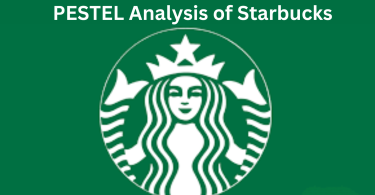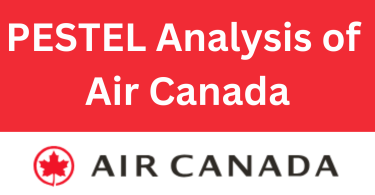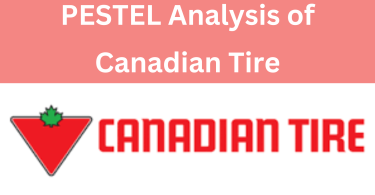The global athletic apparel industry is a dynamic force, pulsating with both opportunity and challenge. While the demand for fitness-focused clothing flourishes, the market itself is a labyrinth of complexities.
Unpredictable economic shifts, ever-evolving social trends, and relentless technological churn can quickly reshape the playing field.
Lululemon, like many other established giants, must constantly manage this unpredictable and volatile environment. To truly succeed, a deeper understanding of these external forces is crucial.
Enter the PESTEL model, a framework that acts as a compass, helping us analyze the Political, Economic, Social, Technological, Environmental, and Legal factors that influence the athletic apparel industry.
By examining these elements, Lululemon and its competitors can make informed decisions, chart a strategic course, and weather the storms of a constantly evolving market.
Lululemon Overview
History
Lululemon Athletica Inc. was founded in 1998 by Chip Wilson in Vancouver, Canada. It started as a yoga studio with a small retail section selling yoga apparel.
The retail aspect of the business quickly outgrew the studio, and Lululemon transitioned into a full-fledged athletic apparel company.
Activities
Lululemon designs, develops, distributes, and sells athletic apparel and accessories for women and men. Its products are focused on yoga, running, training, and other athletic pursuits. Lululemon also offers athleisure wear and lifestyle products.
Achievements
- Stores: Lululemon has over 570 stores globally across North America, Asia Pacific, and Europe
- Countries: Lululemon has stores in over 28 countries
Competitors
Lululemon’s main competitors include:
- Nike
- Adidas
- Under Armour
- Athleta (Gap Inc.)
- Sweaty Betty
Customers
Lululemon’s target customers are interested in health and fitness and are willing to pay a premium for high-quality, stylish athletic apparel. The company caters to both men and women.
Strategy
Lululemon’s strategy focuses on:
- Brand: Building a strong brand identity associated with yoga, fitness, and a healthy lifestyle.
- Product: Offering high-quality, innovative, and functional athletic apparel.
- Customer experience: Providing exceptional customer service and creating a loyal community around the brand.
- Community: Fostering a community of yoga enthusiasts and fitness lovers through events and social media engagement.

Pestel analysis of Lululemon
We now turn to the results of Lululemon’s PESTEL analysis:
Political factors
The political context presents both opportunities and challenges for Lululemon in the global athletic apparel industry.
Opportunities:
Trade Agreements:
Trade agreements can reduce tariffs and import duties, making it cheaper for Lululemon to source materials and manufacture products overseas. This can improve profit margins and make Lululemon’s products more competitive globally.
For example, the recent US-Mexico-Canada Agreement (USMCA) could benefit Lululemon’s North American supply chain.
Government Funding for Athletics:
Increased government funding for sports programs and initiatives can boost demand for athletic apparel. This is particularly relevant in emerging markets where sports participation is growing.
Threats:
Trade Tensions:
Rising trade tensions between countries, like the US and China, can lead to increased tariffs and disrupt supply chains.
This can raise production costs and limit Lululemon’s ability to source materials competitively. The ongoing trade war between the US and China has already impacted several apparel companies.
Political Instability:
Political instability in key markets can disrupt Lululemon’s operations and limit its ability to expand. For instance, political unrest in a major manufacturing hub could cause production delays.
Economic factors
Lululemon finds itself in an interesting spot within the athletic apparel industry. Here’s a breakdown of current economic factors presenting both challenges and opportunities:
Opportunities:
Rising Health & Wellness Trends:
Increased global focus on health and fitness continues to drive demand for athletic wear. A 2023 report highlights this trend, with the athletic apparel industry being one of the few with consistent growth despite economic headwinds.
Emerging Markets:
Growing economies, particularly in Asia, offer significant export opportunities. The World Bank estimates that household spending on sports in emerging economies could reach substantial figures in the coming years.
Threats:
Economic Uncertainty:
Inflation and potential recessionary threats could lead to reduced consumer spending, especially on discretionary items like athletic apparel. Lululemon will need to manage price sensitivity and ensure value for money.
Fierce competition:
The athletic apparel market is highly competitive, with established players like Nike and Adidas, along with new entrants focusing on specific niches. Lululemon will need to maintain brand differentiation and innovation.
Social factors
Lululemon thrives at the intersection of athletic apparel and a specific social and cultural environment. Here’s a look at current trends presenting opportunities:
Opportunities:
Athleisure as Lifestyle:
The blurring of lines between athletic wear and everyday clothing (“athleisure”) is a major trend. A recent study indicates that over 60% of consumers wear athleisure for everyday activities. Lululemon can capitalize on this by offering versatile and stylish apparel.
Focus on Mental Well-being:
The growing emphasis on mental health and mindfulness creates an opportunity for brands that promote holistic well-being. Lululemon’s existing focus on community and in-store yoga classes aligns perfectly with this trend.
Inclusivity and Body Positivity:
Consumers are increasingly demanding inclusivity in sizing and representation in marketing. Lululemon can leverage its influence to promote body positivity and cater to diverse body types. A recent study revealed that 70% of women surveyed felt dissatisfied with their bodies, highlighting a need for a more inclusive approach to fashion.
Threats:
Fast Fashion Concerns:
Consumers are becoming more aware of the environmental and ethical issues associated with fast fashion. Lululemon needs to maintain transparency in its supply chain and production practices.
Social Media Pressures:
Social media can create unrealistic body image expectations. Lululemon can leverage its platform to promote healthy lifestyles and realistic body portrayals through its marketing and influencer partnerships.
Technological factors
The technological context is rapidly changing the athletic apparel industry, presenting exciting opportunities for Lululemon, including the ongoing e-commerce boom.
Opportunities:
Connected Apparel:
Smart clothing embedded with sensors can track performance metrics and biofeedback and adjust to temperature or movement.
For example, Lululemon has partnered with MIRROR, a home fitness platform, offering interactive workout experiences that utilize connected apparel.
Personalized Experiences:
Data collected through wearable technology can be used to personalize the customer experience (e.g., product recommendations based on activity level).
Augmented Reality (AR) and Virtual Reality (VR):
AR/VR can revolutionize the shopping experience by enabling virtual try-ons and personalized product visualization.
The company is also exploring AR applications, allowing customers to try on clothes virtually through their app.
E-commerce Boom:
The surge in online shopping presents a massive opportunity for Lululemon. By investing in a user-friendly online store, offering seamless omnichannel experiences, and effectively leveraging social media marketing, Lululemon can reach a wider audience and drive online sales.
Lululemon has invested heavily in its e-commerce platform, offering features like easy returns and free shipping, which has contributed to its significant online sales growth.
Recent statistics show that Lululemon’s e-commerce revenue has reached over 50% of its total net revenue, highlighting the importance of this channel.
Threats:
Data Privacy Concerns:
As technology becomes more integrated with apparel, consumer concerns about data privacy will need to be addressed.
Technical Integration:
Seamless integration of technology into apparel requires expertise and investment in research and development.
Disruptive Technologies:
The rapid pace of technological innovation can lead to unexpected disruptions. New materials, manufacturing processes, or fitness technologies could emerge and challenge Lululemon’s current market position. Staying agile and adaptable will be crucial.
Environmental factors
Opportunities:
Sustainable Materials:
Consumers are increasingly demanding eco-friendly products. Lululemon can capitalize on this by using recycled materials (like polyester from plastic bottles), organic cotton, and natural fibers like Tencel.
A recent textile industry report indicates a significant rise in the use of recycled polyester in apparel, demonstrating growing consumer interest.
Circular Economy:
By adopting a circular economy approach, Lululemon can minimize waste and maximize resource efficiency. This could involve take-back programs for used clothing, garment repair services, and designing products for disassembly and reuse.
The Ellen MacArthur Foundation estimates that a circular fashion industry could unlock a trillion-dollar opportunity globally.
Reduced Environmental Impact:
By implementing sustainable practices throughout the supply chain (e.g., reducing water usage in dyeing processes and using cleaner energy sources), Lululemon can minimize its environmental footprint and appeal to environmentally conscious consumers.
A 2023 report by [McKinsey & Company, Fashion on Climate] highlights the significant environmental impact of the fashion industry, making sustainability a key differentiator for brands.
Threats:
Greenwashing Concerns:
Consumers are wary of “greenwashing” – companies making misleading claims about their sustainability efforts. Lululemon needs to be transparent about its supply chain and the environmental impact of its products.
Microplastics:
Synthetic materials like polyester shed microplastics when washed, polluting waterways and harming ecosystems. Lululemon needs to explore solutions like advanced filtration technologies or alternative materials to mitigate this issue.
Regulation:
Governments are increasingly implementing regulations to address environmental concerns in the fashion industry. Lululemon needs to ensure compliance with these regulations and stay ahead of evolving environmental standards.
Legal factors
The legal environment presents a complex situation for Lululemon within the global athletic apparel industry. Here’s a breakdown of key areas:
Opportunities:
Intellectual Property (IP) Protection:
Strong IP protection (patents, trademarks, copyrights) safeguards Lululemon’s innovative designs and brand identity. Successfully defending its IP can deter counterfeiting and protect its market share. A recent report highlights the increasing importance of IP protection in a globalized economy.
Fair Labor Practices:
Consumers are increasingly concerned about ethical labor practices in the garment industry. Lululemon can leverage its commitment to fair labor practices to attract socially conscious consumers.
A 2023 survey by PricewaterhouseCoopers indicates that 83% of global consumers are willing to pay more for sustainable products, which often include ethical labor practices.
Trade Agreements:
Strategic trade agreements can reduce import/export tariffs and facilitate Lululemon’s smoother global expansion. For example, joining regional trade blocs like the Comprehensive and Progressive Agreement for Trans-Pacific Partnership (CPTPP) could offer significant benefits.
Threats:
Counterfeiting:
Counterfeiting Lululemon’s popular designs remains a challenge. The company needs to work with authorities to combat counterfeiting activities and protect its brand value.
A 2023 report by the OECD estimates the value of the global counterfeit market to be in the trillions, highlighting the pervasiveness of this issue.
Thus, Lululemon has taken legal action against counterfeiters in various countries to protect its intellectual property.
Labor Law Compliance:
Dealing with diverse labor laws across different countries can be complex. Lululemon must ensure compliance with minimum wage, working hour restrictions, and child labor prohibitions to avoid legal repercussions and brand damage.
High-profile cases of labor law violations in the apparel industry can significantly tarnish a brand’s reputation.
Data Privacy Regulations:
With growing data privacy concerns, regulations like the General Data Protection Regulation (GDPR) in Europe and the California Consumer Privacy Act (CCPA) require careful handling of customer data.
Lululemon needs to ensure compliance with these regulations and transparent data practices to maintain consumer trust.
Conclusion
In conclusion, this PESTEL analysis of Lululemon reveals a macro environment brimming with both potential and peril. On the bright side, rising health consciousness, technological advancements in garment design, and a growing emphasis on sustainability present exciting opportunities for innovation and market expansion.
However, economic downturns, geopolitical instability, and evolving consumer preferences can pose significant threats.
By remaining agile, adaptable, and responsive to external forces, Lululemon can successfully maneuver through the complexities of the athletic apparel industry and solidify its position as a leader in this ever-changing landscape.
Read also: SWOT analysis of Lululemon in 2024.
PESTEL analysis examples 2024
To better understand the PESTEL analysis, we invite you to read our recent free examples of the Pestel framework.
PESTEL analysis of China
Click here to read our example of China PESTEL analysis.
PESTEL analysis of Coca-cola
Click here to read our example of Coca-cola PESTEL analysis.
PESTEL analysis of British Airways
Click here to read our example of British Airways PESTEL analysis.
PESTEL analysis of Primark
Click here to read our example of Primark’s PESTEL analysis.
PESTEL analysis of Zara
Click here to read our example of Zara’s PESTEL analysis.
PESTEL analysis of DHL
Click here to read our example of DHL’s PESTEL analysis.
PESTEL analysis of FedEx
Click here to read our example of FedEx’s PESTEL analysis.
PESTEL analysis of Chipotle
Click here to read our example of Chipotle’s PESTEL analysis.
PESTEL analysis of Brazil
Click here to read our example of Pestel’s analysis of Brazil.
PESTEL analysis of Spotify
Click here to read our example of Spotify Pestel analysis.
Chick-fil-A PESTEL Analysis
Click here to read our example of Chick-fil-A Pestel analysis.
Costco PESTEL Analysis
Click here to read our example of Costco Pestel analysis.
Microsoft PESTEL Analysis
Click here to read our example of Microsoft Pestel analysis.
Disney PESTEL Analysis
Click here to read our example of Disney Pestel analysis.
Airline Industry PESTEL Analysis
Click here to read our example of the Airline industry Pestel analysis.
Walmart Pestel Analysis
Click here to read our example of Walmart Pestel analysis.
Amazon Pestel Analysis
Click here to read our example of Amazon Pestel analysis.
McDonald’s Pestel Analysis
Click here to read our example of the Netflix Pestel analysis.
Netflix Pestel Analysis
Click here to read our example of the Netflix Pestel analysis.
Apple Pestel Analysis
Click here to read our example of the Apple Pestel analysis.
Twitter Pestel Analysis
Click here to read our example of the Twitter Pestel analysis.
Facebook Pestel Analysis
Click here to read our example of the Facebook Pestel analysis.
Pestel analysis of the Social Media industry
Click here to read our example of the Pestel analysis of the Social Media industry.
Ikea Pestel Analysis
Click here to read our example of the IKEA Pestel analysis.
Tesla Pestel Analysis
Click here to read our example of the TESLA Pestel analysis.












Leave a Comment